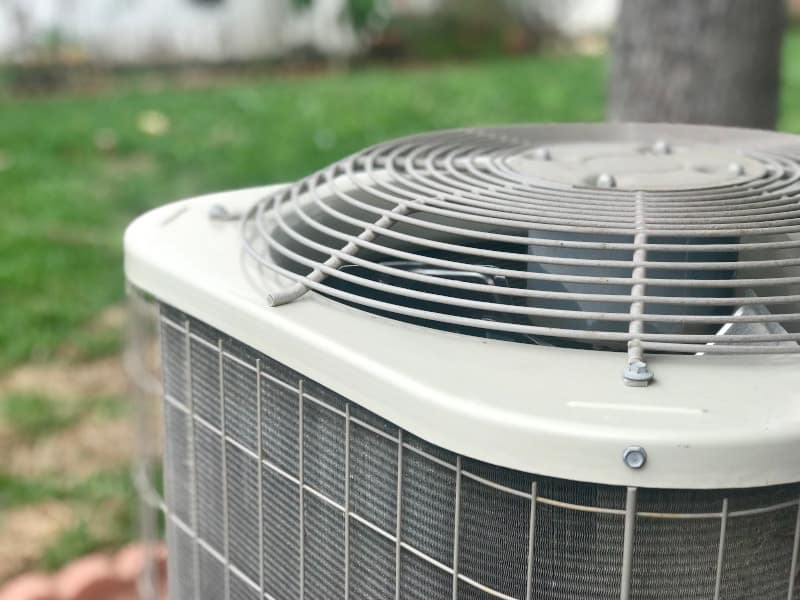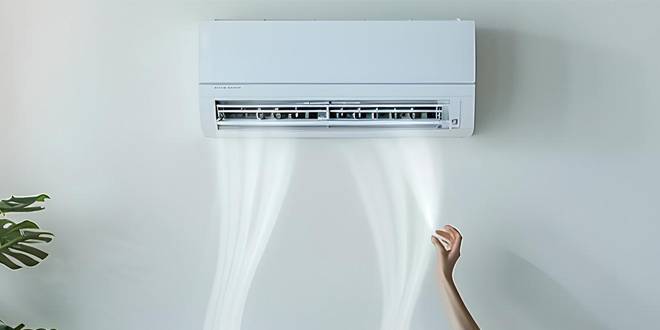Why Is My Air Conditioner Always Running

An air conditioner that's constantly running can be a homeowner's (and facility manager's) nightmare. Not only does it send energy bills skyrocketing, but it also signals a potential underlying problem that needs immediate attention. Understanding the reasons behind this continuous operation is crucial for maintaining a comfortable indoor environment and preventing costly repairs. This article explores the common causes of an air conditioner running non-stop, offering insights for homeowners, HVAC technicians, and facility managers alike.
Understanding the Normal AC Cycle
Before diving into the potential problems, it’s important to understand how an air conditioner is supposed to work. A properly functioning AC system cycles on and off to maintain the thermostat's set temperature. The compressor kicks in, cools the air, and then shuts off once the desired temperature is reached. This cycle repeats as needed throughout the day. The frequency and duration of these cycles depend on several factors, including the outdoor temperature, insulation levels, and the size of the space being cooled. For example, on a mild day, your AC might only run for 15-20 minutes every hour. On a scorching summer day, it might run for 40-50 minutes per hour, or even longer during peak heat.
Common Causes of Continuous AC Operation
When your AC runs constantly, it often indicates an underlying issue. Here are some of the most common culprits:
1. Thermostat Issues
The thermostat is the brain of your HVAC system. If it's malfunctioning, it can send incorrect signals to the AC unit, causing it to run continuously. Several thermostat-related problems can cause this:
- Incorrect Temperature Settings: Ensure the thermostat is set to a reasonable temperature. Setting it significantly lower than the ambient temperature will force the AC to work harder and run longer.
- Faulty Thermostat Calibration: A miscalibrated thermostat might read the room temperature incorrectly, leading the AC to run continuously in an attempt to reach a temperature that's already been achieved.
- Placement Problems: A thermostat placed in direct sunlight or near a heat source (like a lamp or appliance) will provide inaccurate readings, causing the AC to overcompensate.
- Wiring Issues: Damaged or loose wiring can disrupt the communication between the thermostat and the AC unit.
2. Refrigerant Leaks
Refrigerant is the lifeblood of your AC system. It's the substance that absorbs heat from the indoor air and releases it outdoors. A refrigerant leak reduces the system's cooling capacity, forcing it to run longer to achieve the desired temperature. This is a serious problem that requires professional attention. Common signs of a refrigerant leak include:
- Weak Airflow: The air coming from the vents might not be as cold as usual.
- Ice Formation: Ice may form on the evaporator coil or refrigerant lines.
- Higher Energy Bills: The system has to work harder and longer, increasing energy consumption.
- Hissing Sound: You might hear a hissing sound near the AC unit, indicating a refrigerant leak.
3. Dirty Air Filters
A dirty air filter restricts airflow, forcing the AC unit to work harder to circulate air. This can lead to overheating and continuous operation. Regularly replacing your air filter is a simple but crucial maintenance task. How often should you change it? It depends on factors like allergies, pets, and the type of filter, but a good rule of thumb is to replace it every 1-3 months.
4. Dirty Condenser Coils
The condenser coil is located in the outdoor unit and is responsible for releasing heat. If it's covered in dirt, debris, or vegetation, it can't efficiently release heat, causing the system to run longer and potentially overheat. Regularly cleaning the condenser coil with a garden hose can improve its efficiency. Avoid using high-pressure washers, as they can damage the delicate fins.
5. Blocked or Leaky Ductwork
Ductwork distributes cooled air throughout your home. If the ductwork is blocked by debris or has leaks, cooled air will escape, forcing the AC unit to work harder to maintain the desired temperature. Sealing leaky ducts can significantly improve your system's efficiency. Consider having a professional conduct a ductwork inspection and sealing.
6. Undersized AC Unit
If your AC unit is too small for the size of your home or building, it will struggle to keep up with the cooling demand, especially during peak heat. This will result in continuous operation and potentially shorten the lifespan of the unit. Determining the correct AC size requires a load calculation that considers factors like the square footage, insulation levels, window area, and climate. Consult with an HVAC professional to ensure your AC unit is properly sized.
7. Problems with the Compressor or Fan Motor
The compressor is the heart of the AC system, and the fan motor circulates air over the coils. If either of these components is failing, the AC unit won't be able to cool effectively and will run continuously. These issues typically require professional diagnosis and repair.
Troubleshooting Steps for Homeowners
Before calling an HVAC technician, there are a few things you can check yourself:
- Check the Thermostat: Ensure it's set to the correct temperature and that it's not in direct sunlight or near a heat source. Try resetting the thermostat or replacing the batteries.
- Replace the Air Filter: A clean air filter can make a significant difference in AC performance.
- Clear Obstructions: Ensure the outdoor unit is free of debris, vegetation, and other obstructions.
- Check for Icing: If you see ice on the evaporator coil or refrigerant lines, turn off the AC unit and call a professional.
The Role of HVAC Technicians
For more complex issues, it's essential to consult with a qualified HVAC technician. They have the expertise and tools to diagnose and repair refrigerant leaks, compressor problems, fan motor issues, and other complex problems. They can also perform a load calculation to ensure your AC unit is properly sized.
Preventive Maintenance for Optimal Performance
Regular maintenance is key to preventing AC problems and ensuring optimal performance. Consider scheduling annual maintenance checks with a qualified HVAC technician. These checks typically include:
- Cleaning the coils: Removing dirt and debris from the condenser and evaporator coils.
- Checking refrigerant levels: Ensuring the refrigerant charge is within the manufacturer's specifications.
- Inspecting the electrical components: Checking for loose or damaged wiring.
- Lubricating moving parts: Ensuring the fan motor and other moving parts are properly lubricated.
- Calibrating the thermostat: Ensuring the thermostat is accurate and functioning correctly.
Energy Efficiency Considerations
An air conditioner that runs continuously is not only a sign of a potential problem but also a major drain on energy. When choosing an air conditioner, consider its SEER (Seasonal Energy Efficiency Ratio) rating. The higher the SEER rating, the more efficient the unit is. For example, a unit with a SEER rating of 16 is more efficient than a unit with a SEER rating of 13. Upgrading to a more energy-efficient AC unit can save you money on your energy bills and reduce your carbon footprint. Furthermore, consider using a programmable thermostat to automate temperature settings and reduce energy consumption when you're not home. Smart thermostats like Nest or Ecobee can learn your patterns and automatically adjust temperatures for optimal comfort and energy savings. You can also use zoning systems, which allow you to control the temperature in different areas of your home independently. This can be especially useful if you have rooms that are rarely used.
Costs Associated with a Continuously Running AC
The financial impact of an AC running continuously can be significant. Increased energy bills are the most immediate consequence. Furthermore, the added stress on the system can lead to premature wear and tear, shortening its lifespan and potentially requiring costly repairs or replacement. For example, a refrigerant leak, if left unaddressed, can eventually damage the compressor, which is one of the most expensive components to replace. Ignoring the problem can also lead to higher humidity levels indoors, creating a breeding ground for mold and mildew, which can pose health risks and require costly remediation.
Lifespan of an Air Conditioner
The average lifespan of an air conditioner is typically 10-15 years, but this can vary depending on factors like maintenance, usage, and climate. An AC unit that runs continuously is likely to have a shorter lifespan than one that cycles properly. Proper maintenance, including regular filter changes, coil cleaning, and professional checkups, can help extend the lifespan of your AC unit. Investing in a high-quality unit and ensuring it's properly sized for your home or building can also contribute to a longer lifespan.
In conclusion, an air conditioner that's always running is a red flag that shouldn't be ignored. By understanding the potential causes and taking proactive steps to address them, you can maintain a comfortable indoor environment, reduce energy costs, and extend the lifespan of your AC system. Whether you're a homeowner, HVAC technician, or facility manager, addressing these issues promptly is essential for maintaining a healthy and efficient cooling system.










